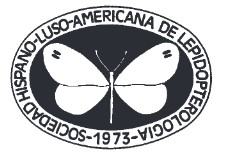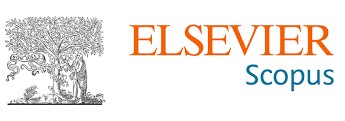Molecular identification of some immature Lepidoptera causing Quercus L., defoliation in Lorestan province, western Iran (Insecta: Lepidoptera)
DOI:
https://doi.org/10.57065/shilap.787Keywords:
Insecta, Lepidoptera, Damage, Quercus brantii, sequencing, COI barcoding, Phylogenetic tree, IranAbstract
Quercus L., dominate almost 40% of Iran’s forest area. The second destructive group of insects is defoliator Lepidoptera distributed in the Zagros forests of Iran. We assessed Lepidoptera communities in Zagros forests ecosystems in Lorestan province, western Iran during a ca. 2-yr period that coincided with defoliation outbreaks experienced by this area. A number of 500 lepidopteran larva feeding Quercus leaves handy were collected. The phylogenetic relationship of Lepidoptera was analysed using BEAST software based on the Bayesian Inference method. In total, 14 lepidopteran taxa were identified based on DNA sequences of their immature stages. Six genera and eight species were identified using BLASTn. Here we developed a COI barcoding-based approach to Lepidoptera species delimitation.
Downloads
Global Statistics ℹ️
|
728
Views
|
362
Downloads
|
|
1090
Total
|
|
References
Abai, M. (2009). Pests of forest trees & shrubs of Iran. Ministry of Agriculture, Agricultural research, Education & Extension organization.
Attarod, P., Sadeghi, S. M. M., Sarteshnizi, F. T., Saroyi, S., Abbasian, P., Masihpoor, M., Kordrostami, F., & Dirikvandi, A. (2016). Meteorological parameters and evapotranspiration affecting the Zagros forests decline in Lorestan province. Iranian Journal of Forest and Range Protection Research, 13, 97-112. [In Persian].
Barimani Varandi, H., Babaee, M. R., & Vatandost, A. (2006). Some biological notes on Ennomos quercinaria (Lep.: Geometridae) in Mazandaran. Iranian Journal of Forest and Range Protection Research, 4, 71-79. [In Persian].
Beiranvand, A., Attarrod, P., Tavakoli, M., & Marvi Mohajer, M. (2015). Zagros forest ecosystem decline, causes, consequences, and remedies. Forest and Rangeland Journal, 106, 18-30. [In Persian].
Bouckaert, R., Heled, J., Kühnert, D., Vaughan, T., Wu, C.-H., Xie, D., Suchard, M. A., Rambaut, A., & Drummond, A. J. (2014). BEAST 2: a software platform for Bayesian evolutionary analysis. PLoS computational biology, 10, e1003537. https://doi.org/https://dx.doi.org/10.1371%2Fjournal.pcbi.1003537 DOI: https://doi.org/10.1371/journal.pcbi.1003537
Ciesla, W. (2011). Forest entomology: a global perspective. John Wiley & Sons. DOI: https://doi.org/10.1002/9781444397895
Csóka, G., & Kovács, T. (1999). Xylophagous insects. Hungarian Forest Research Institute.
Domingue, M. J., Csóka, G., Tóth, M., Vétek, G., Pénzes, B., Mastro, V., & Baker, T. C. (2011). Field observations of visual attraction of three European oak buprestid beetles toward conspecific and heterospecific models. Entomologia experimentalis et applicata, 140, 112-121. DOI: https://doi.org/10.1111/j.1570-7458.2011.01139.x
Doyle, J. J., & Doyle, J. L. (1987). A rapid DNA isolation procedure for small quantities of fresh leaf tissue. Phytochemical Bulletin, 19, 11-15.
Eshleman, K. N., Morgan, R. P., Webb, J. R., Deviney, F. A., & Galloway, J. N. (1998). Temporal patterns of nitrogen leakage from mid-Appalachian forested watersheds: Role of insect defoliation. Water Resources Research, 34, 2005-2016. DOI: https://doi.org/10.1029/98WR01198
Gil-Pelegrín, E., Peguero-Pina, J. J., & Sancho-Knapik, D. (2017). Oaks and people: a long journey together. In E. Gil-Pelegrín, J. J. Peguero-Pina, & D. Sancho-Knapik (Eds.), Oaks physiological ecology, exploring the functional diversity of genus Quercus L. (pp. 1-11). Springer. DOI: https://doi.org/10.1007/978-3-319-69099-5_1
Glavendekiæ, M. M., & Medareviæ, M. (2010). Insect defoliators and their influence on oak forests in the Djerdap National Park, Serbia. Archives of Biological Sciences, 62, 1137-1141. DOI: https://doi.org/10.2298/ABS1004137G
Gouy, M., Guindon, S., & Gascuel, O. (2010). SeaView version 4: a multiplatform graphical user interface for sequence alignment and phylogenetic tree building. Molecular Biology and Evolution, 27, 221-224. https://doi.org/10.1093/molbev/msp259 DOI: https://doi.org/10.1093/molbev/msp259
Hajizadeh, G., Jalilvand, H., Kavosi, M. R., & Barimani Varandi, H. (2016). Relationship between insect herbivory and environmental variables in forests of northern Iran. Nusantara Bioscience, 8, 155-160. DOI: https://doi.org/10.13057/nusbiosci/n080205
Jafarzadeh, A. A., Mahdavi, A., Fallah Shamsi, S. R., & Yousefpour, R. (2020). Economic evaluation of some of the most important ecosystem services in Zagros forests. Environmental Sciences, 18, 137-150. [In Persian]. DOI: https://doi.org/10.29252/envs.18.1.137
Jalili, A. (2022). Leucoma wiltshirei Coll and sustainable management of Zagros. Iran Nature, 7, 3-3. [In Persian].
Jazirehi, M. H., & Ebrahimi Rostaghi, M. (2003). Silviculture in Zagros. University of Tehran Press.
Kalapanida, M., & Petrakis, P. V. (2012). Temporal partitioning in an assemblage of insect defoliators feeding on oak on a Mediterranean mountain. European Journal of Entomology, 109, 55-69. DOI: https://doi.org/10.14411/eje.2012.008
Kavosi, M. R. (2007). Hyphantria cunea in Mazandaran and Ardabil Provinces. Plant Protection Extension [formerly Plant Pathologist & Food], 1, 53. [In Persian].
Kavosi, M. R., & Gninenko, Y. I. (2007). Hyphantria cunea in Mazandaran and Ardabil Provinces. Plant Protection Extension [formerly Plant Pathologist & Food], 1, 52. [In Persian].
Kiadaliri, H., Ostovan, H., Abaei, M., & Ahangaran, Y. (2005). Investigation on the behaviour treat of leaf feeder moth (Erannis defoliaria clerck) and natural enemies in forests of the in west of Mazandaran province. Journal of Agricultural Sciences (Islamic Azad University), 11, 145-159. [In Persian].
Kravchenko, V. D., Fibiger, M., Hausmann, A., & Müller, G. C. (2007). The Lepidoptera of Israel, Noctuidae (Vol. 2). Pensoft Publishers.
Kulman, H. (1971). Effects of insect defoliation on growth and mortality of trees. Annual Review of Entomology, 16, 289-324. DOI: https://doi.org/10.1146/annurev.en.16.010171.001445
Kumar, S., Stecher, G., & Tamura, K. (2016). MEGA7: molecular evolutionary genetics analysis version 7.0 for bigger datasets. Molecular Biology and Evolution, 33, 1870-1874. https://doi.org/10.1093/molbev/msw054 DOI: https://doi.org/10.1093/molbev/msw054
Marquis, R. J., Passoa, S. C., Lill, J. T., Whiteld, J. B., Le Cor, J., Forkner, R. E., & Passoa, V. A. (2019). Illustrated guide to the immature Lepidoptera on oaks in Missouri. Forest Health Assessment & Applied Sciences Team.
McCullough, D. G., Werner, R. A., & Neumann, D. (1998). Fire and insects in northern and boreal forest ecosystems of North America. Annual Review of Entomology, 43, 107-127. DOI: https://doi.org/10.1146/annurev.ento.43.1.107
Mirzayans, H., & Abai, M. (1974). The oak trees lepidoptera in Iran. Journal of Entomological Society of Iran, 1, 109-126.
Mohammadian, H. (2005). Biological diversity of Lepidoptera in Iran (geographic distribution of 2200 species). Sepehr Publication Center.
Netherer, S., & Schopf, A. (2010). Potential effects of climate change on insect herbivores in European forests-General aspects and the pine processionary moth as specific example. Forest Ecology and Management, 259, 831-838. DOI: https://doi.org/10.1016/j.foreco.2009.07.034
Rahmani, A., Pourhashemi, M., Bordbar, K., Jahanbazi, H., Matinizadeh, M., Iranmanesh, Y., & Tavakoli, M. (2022). Zagros forests monitoring, measures and preliminary results. Iran Nature, 7, 87-105. [In Persian].
Ravan, B., Esfandiari, M., Mossadegh, M. S., & Rabieh, M. M. (2016). Introducing some moths of Noctuinae (Lep.: Noctuidae) from southern areas of Zagros in Khuzestan and Fars provinces. Iranian Journal of Forests and Rangelands Protection Research, 13, 113-131. [In Persian].
Reynolds, B. C., Hunter, M. D., & Crossley Jr, D. (2000). Effects of canopy herbivory on nutrient cycling in a northern hardwood forest in western North Carolina. Selbyana, 21, 74-78.
Rouault, G., Candau, J.-N., Lieutier, F., Nageleisen, L.-M., Martin, J.-C., & Warzée, N. (2006). Effects of drought and heat on forest insect populations in relation to the 2003 drought in Western Europe. Annals of Forest Science, 63, 613-624. DOI: https://doi.org/10.1051/forest:2006044
Sagheb-Talebi, K., Pourhashemi, M., & Sajedi, T. (2014). Forests of Iran: a treasure from the past, a hope for the future. Springer. DOI: https://doi.org/10.1007/978-94-007-7371-4
Shahreyari-Nejad, S., Esfandiari, M., Rasekh, A., Mossadegh, M., & Shirvani, A. (2018). New records of Noctuinae for Iran with additional distribution data (Lepidoptera: Noctuidae). SHILAP Revista de lepidopterología, 46, 145-155.
Simmons, M. J., Lee, T. D., Ducey, M. J., Elkinton, J. S., Boettner, G. H., & Dodds, K. J. (2014). Effects of invasive winter moth defoliation on tree radial growth in eastern Massachusetts, USA. Insects, 5, 301-318. DOI: https://doi.org/10.3390/insects5020301
Swank, W. T., Waide, J., Crossley, D., & Todd, R. (1981). Insect defoliation enhances nitrate export from forest ecosystems. Oecologia, 51, 297-299. DOI: https://doi.org/10.1007/BF00540897
Tavakoli, M., Hosseini-Chegeni, A., & Khaghaninia, S. (2017). The first report of outbreak and identification of the larvae of oak defoliator wasp, Periclista sp. (Hymenoptera: Tenthredinidae) using COI gene from Iran. Iranian Journal of Forest and Range Protection Research, 15, 203-209. [In Persian].
Tavakoli, M., Hosseini-Chegeni, A., & Khaghaninia, S. (2018). The first report of gypsy moth, Lymantria dispar (Lepidoptera: Lymantriidae) outbreak from Northern Zagros forests and its identification using COI gene in Iran. Iranian Journal of Forest and Range Protection Research, 16, 207-218. [In Persian].
Tavakoli, M., Hosseini-Chegeni, A., & Khaghaninia, S. (2019). The outbreak report of ash defoliator sawfly, Tomostethus sp. outbreak (Hymenoptera: Tenthredinidae) from Iran. Forest Research and Development, 5, 317-328. [In Persian].
Tavakoli, M., Khaghaninia, S., Melika, G., Stone, G. N., & Hosseini-Chegeni, A. (2019). Molecular identification of Andricus species (Hymenoptera: Cynipidae) inducing various oak galls in Central Zagros of Iran. Mitochondrial DNA Part A, 30, 713-720. DOI: https://doi.org/10.1080/24701394.2019.1622693
Torun, Ö., & Çaliºkan, S. S. (2016). Caterpillar (Lepidoptera) communities on oak (Quercus pubescens) in Ankara province (Turkey). Türkiye Entomoloji Dergisi, 40, 281-290. DOI: https://doi.org/10.16970/ted.88652
Webb, J., Cosby, B., Deviney, F., Eshleman, K., & Galloway, J. (1995). Change in the acid-base status of an Appalachian mountain catchment following forest defoliation by the gypsy moth. Water, Air, and Soil Pollution, 85, 535-540. DOI: https://doi.org/10.1007/BF00476884
Published
How to Cite
Issue
Section
License

This work is licensed under a Creative Commons Attribution 4.0 International License.
The author SS retains his trademark and patent rights to any process or procedure within the article.
The author retains the right to share, distribute, perform and publicly communicate the article published in SHILAP Revista de lepidopterología, with initial acknowledgement of its publication in SHILAP Revista de lepidopterología.
The author retains the right to make a subsequent publication of his work, from using the article to publishing it in a book, provided that he indicates its initial publication in SHILAP Revista de lepidopterología.
Each submission to SHILAP Revista de lepidopterología must be accompanied by an acceptance of copyright and acknowledgement of authorship. By accepting them, authors retain copyright of their work and agree that the article, if accepted for publication by SHILAP Revista de lepidopterología, will be licensed for use and distribution under a "Creative Commons Attribution 4.0 International" (CC BY 4.0) licence that allows third parties to share and adapt the content for any purpose giving appropriate credit to the original work.
You may read here the basic information and the legal text of the license. The indication of the CC BY 4.0 License must be expressly stated in this way when necessary.
As of 2022, the content of the print and digital version is licensed under a "Creative Commons Attribution 4.0 International License" (CC BY 4.0), licence that allows third parties to share and adapt the content for any purpose giving appropriate credit to the original work.
Previous content in the journal was published under a traditional copyright licence; however, the archive is available for free access.
When using the contents of SHILAP Revista de lepidopterología published before 2022, including figures, tables or any other material in printed or electronic format belong to the authors of the articles, the authors must obtain the permission of the copyright holder. Legal, financial and criminal liabilities in this respect belong to the author(s).
In application of the Principle of Priority of the International Code of Zoological Nomenclature, no other version than the one published by the publisher may be deposited in repositories, personal websites or similar.





























